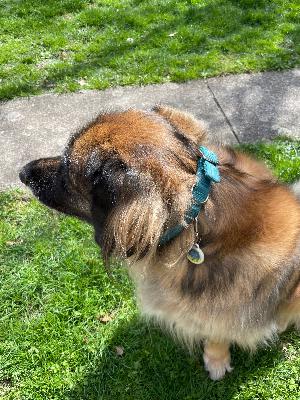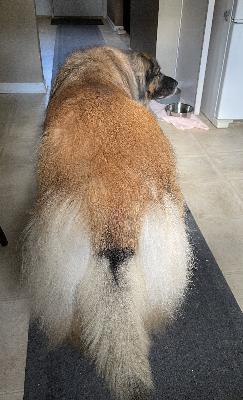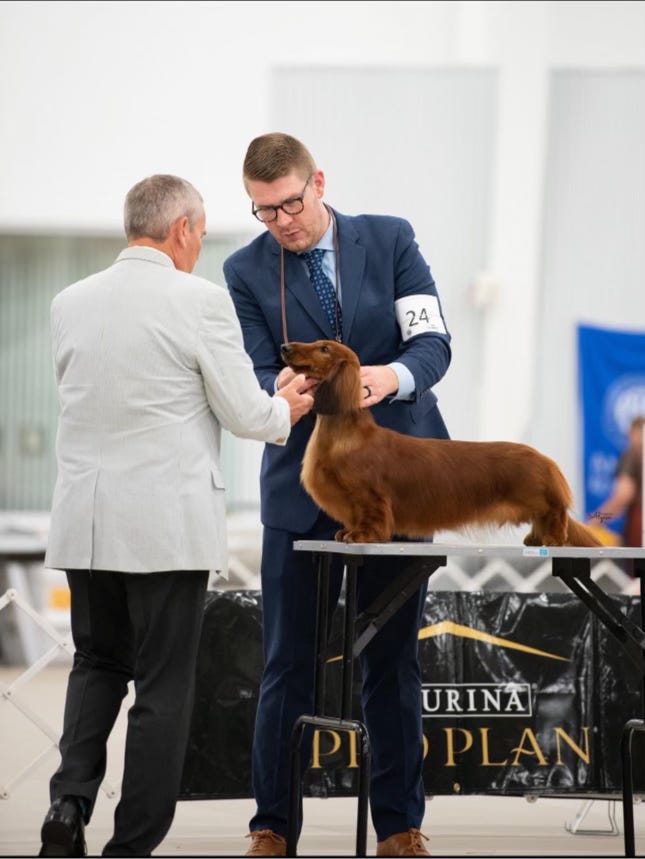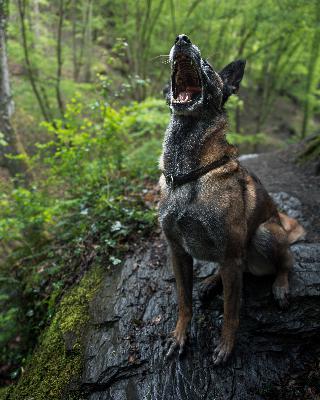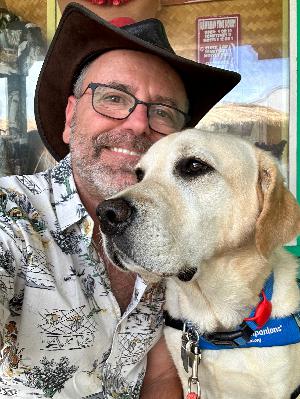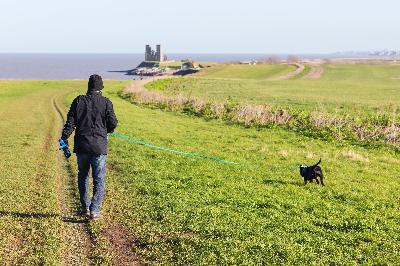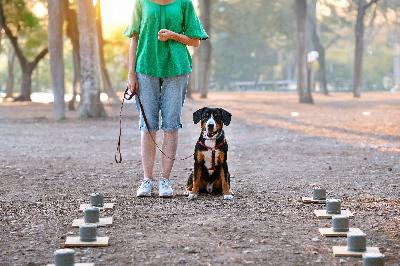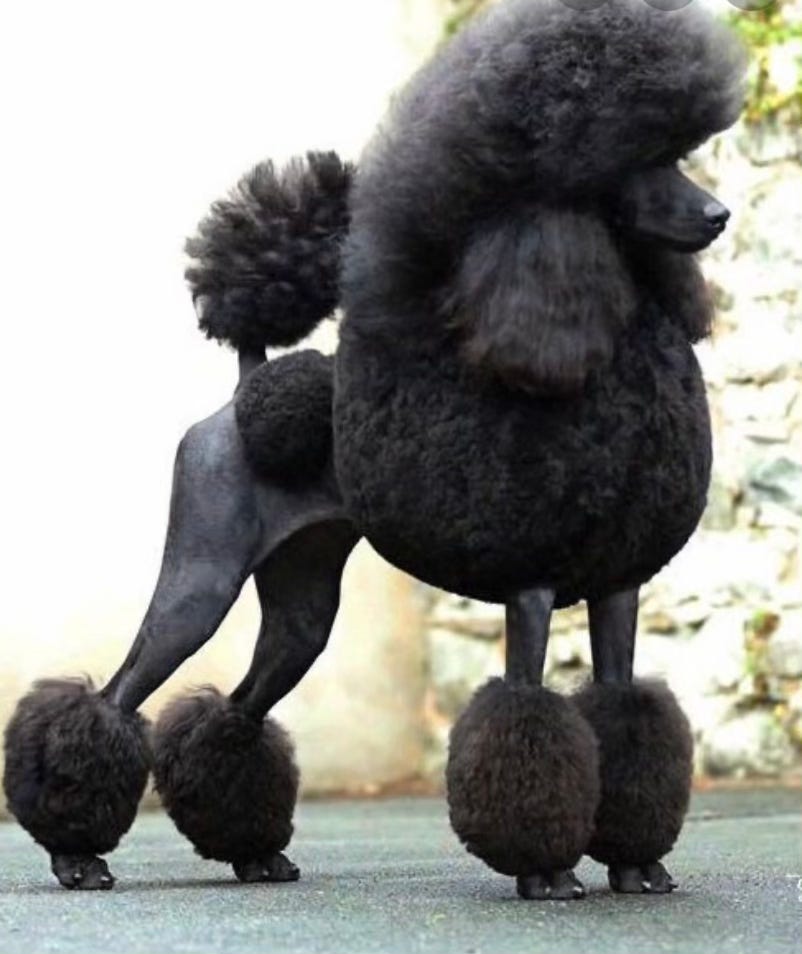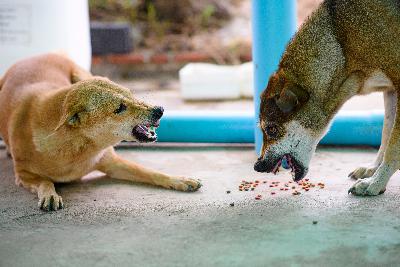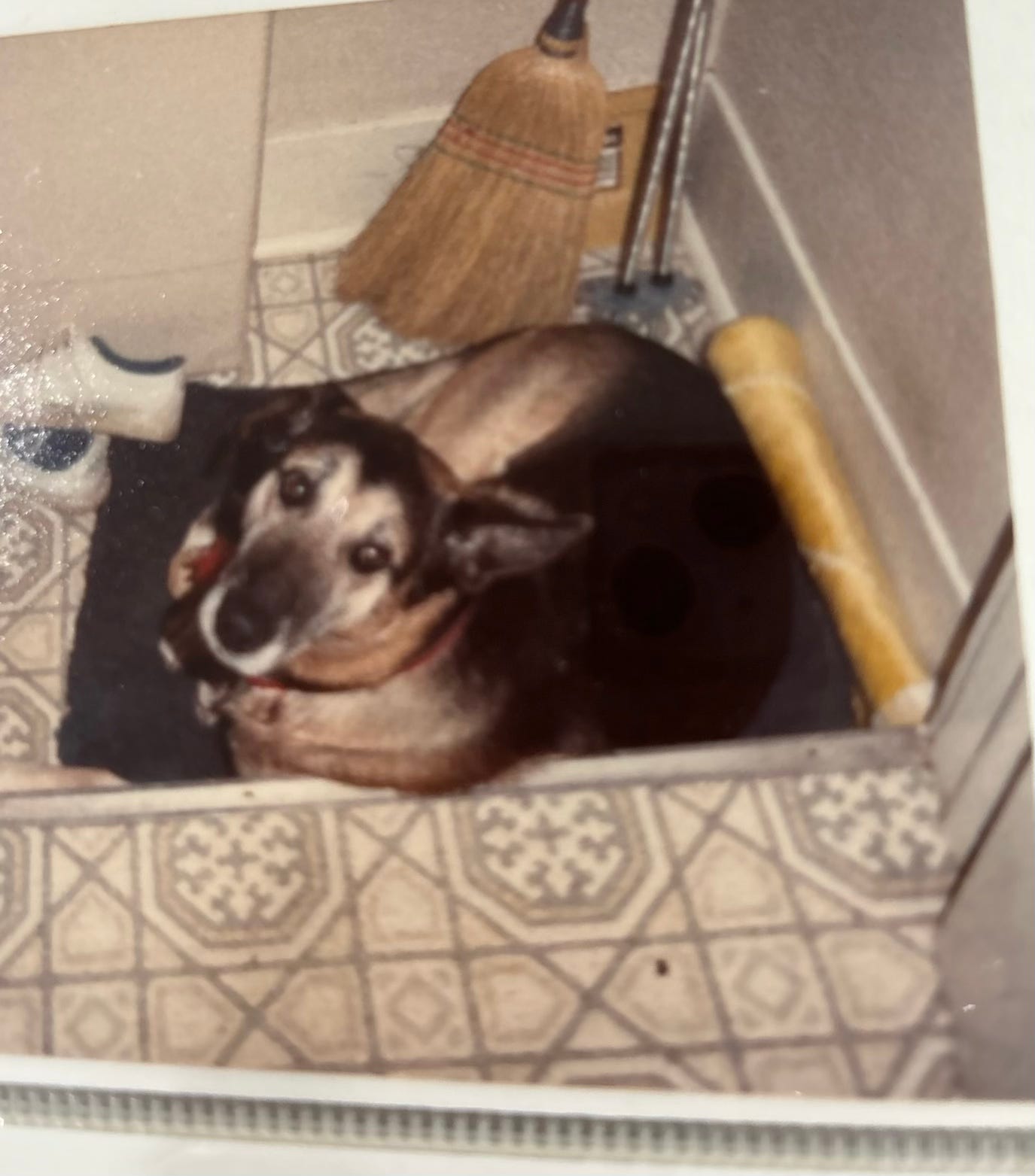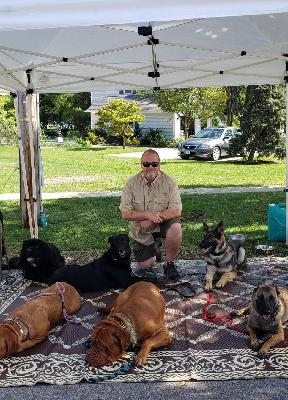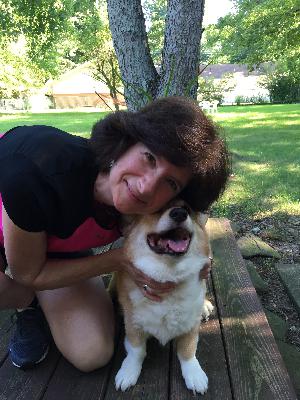Harnesses, Collars and Leashes, Oh My!
Description
When you bring your puppy home for the first time, it is one of the most exciting events in your lifetime. You have made a decision to add to your existing pack, and I congratulate you for doing so. One of the first items you will need to purchase is a leash and a collar or harness. How to decide on which one can be overwhelming. Just as overwhelming as what cereal to choose in the cereal aisle at the grocery store. There are so many choices! Sometimes, you just go by what friends and family have recommended. Other times, you may be influenced by an ad on social media. This episode is to clarify how certain walking tools work, and to help you choose the right one for you and your dog.
When we pick up our puppy from a breeder, most likely, the breeder has put some kind of colored ribbon around the puppy’s neck to differentiate which puppy is which. The puppy is somewhat used to wearing something around its neck, but that doesn’t mean that the puppy will be totally willing to have you put a snap or buckle collar on them. How you introduce this collar is very important to the puppy positively associating this “thing” with something good.
There will be some of you reading this post saying to yourselves that your puppy was absolutely fine with you putting the collar on. As a dog trainer, anything you introduce to your puppy should be well thought out in advance how you will be presenting it before you just go barreling in and forcing a new item on them.
You ALWAYS want to create positive association with introducing anything new to your dog.
Introducing a collar or harness
The process of introducing a collar or harness to a rescue dog is the same as introducing them to a puppy. Rescue dogs may already be used to wearing a collar, but most likely you will be choosing an additional collar or harness for walking purposes. Whichever tool you decide, the introduction will be the same as if it was a puppy.
First, take your time with the whole process of showing the dog their new collar. If you are relaxed and mildly excited, your dog will be too. You want to create some excitement over the collar or harness, but not too much. Get them interested in what is about to happen by feeding them small treats. Then, let them sniff it to their heart’s content. Pet the dog with the collar or harness while giving them treats, being mindful of not letting straps from a harness dangle in front of them. This can trigger a fear response. If the dog is still engaged and not shying away, use some treats while showing them how it snaps together. Sometimes the sound of the snap can trigger some fear in them.
If all is progressing positively, ideally you want them to come to you to put the collar or harness on. Again, lure them with treats. You may need to ask a family member to feed the treats while you put the collar or harness on and snap it. When it is on, you will have to adjust it so that it is “two fingers snug”. If introducing a harness, every strap should be two fingers snug. What this means is that you can fit two fingers between their neck or body and the collar or strap of the harness. This is to ensure that the dog cannot back up and escape out of it. Also, fit the collar high up on the neck, right behind the ears. This prevents the collar from damaging the trachea when they do pull (how to prevent dogs from pulling on a walk will be a separate episode).
I want the dog to be excited about their new collar or harness, but not so excited that I am chasing the dog around the house just to get it on. Remember, you are setting an example of how this walking tool is going to be associated with something. That something is going to be your way of eventually controlling the dog on a leash.
Now that the collar or harness is on, take the dog outside to play or play with the dog inside the house. Pretend that this is a huge accomplishment and make sure the dog knows that you are happy that they are wearing their first walking tool. Depending on the reaction of the dog, just leave the collar or harness on them for a very short period of time.
Dogs usually don’t react adversely to collars, but they can with harnesses. There are only two harnesses that I recommend, which I explain below. Harnesses are made to have dogs haul things. The majority of harnesses clip on the back of the dog. It is impossible to walk a medium to large sized dog in the heel position with this type of harness. It is set up to have the handler behind the dog and to be pulled. If there is tension on the leash, the dog will resist that tension by pulling forward. Now, who is taking whom for a walk??
Harnesses can be big and bulky and it’s a very foreign feeling for the dog to have something on their back. Some dogs will freeze and not want to move forward. I have seen way too many harnesses that are improperly fit - usually too loose. This is a perfect setup for the dog to wiggle out of it and run away. I have heard of too many stories like this. One dog actually got hit by a car when he ran away. The handler was pulling back on the leash, creating the resistance for the dog to move forward. He wiggled out of it, panicked, and ran in the street and got hit by a car. He was okay, but it involved an expensive vet bill and some recovery time for the dog. Luckily, nothing was broken.
Collars are great for hanging identification tags. They are also a way to quickly grab the dog if needed. I don’t recommend leaving a collar with tags on in the crate, especially if you are leaving the house for a period of time. Always check the integrity of the collar. A cloth buckle collar can begin to fray at the eyelets or the buckle can start to break down. If you have any doubts, buy a new one. There are other collars with the 3 prong plastic snap that are very sturdy too. This is just a preference issue. The most important thing to remember about the collar is that it is fit correctly - two fingers snug!
It is worth noting that collars are great to leave on the dog during the day while you are potty training. You can attach the leash to a collar a lot quicker than trying to put a harness on a very wiggly puppy.
Leashes
I always tell my clients to purchase a cheap leash while training a puppy. As much as you want to discourage your puppy from biting the leash, they inevitably will. I will explain more in detail how to stop your puppy from biting the leash in a future episode where I will talk about “The Walk”. When the puppy has been trained how to walk, that’s when you can invest in a leash that will last a long time. Leather leashes are my favorite. They are comfortable and don’t slip in my hand, and they last many years. Gary Flynn, who has been on my podcast before, likes the BioThane leash. It is generally more durable than leather, and is waterproof. However, it is vulnerable to bite marks. Make sure you have worked with your dog to stop biting the leash before investing in a BioThane leash. In my next episode, we will show you this type of leash. It is very durable and comfortable in your hands. These leashes are not sold in most pet stores, but are sold online.
The important thing to keep in mind when deciding on a leash is how comfortable it is when your hand is wrapped around it. Remember, I do not promote walking dogs in front of you where you are just holding on to the handle. Walks in the woods and “sniffaris”are different than walking in a heel position. I will discuss this further in my episode about “The Walk”.
In the video below, you will see how I recommend holding on to a leash. Note that my left hand is grabbing the leash over the leash as if I am holding on to handlebars on a bike. My hand is right by the clip so that the dog does not have much leeway to go where they want to go. It is up to the handler to take the dog over to an area to sniff or eliminate, not the dog leading you over there.
YOU are taking the dog for a walk, not the dog taking you for a walk.
In the picture below, from top to bottom, the first leash is a small 6’ leather leash with a small clip. This is suitable for small dogs. The clip is small and can attach to the ring on a very small collar. You want to make sure that you don’t weigh down your small dog with a heavy, bulky clip. The leash underneath is the leash I use for my 100+ pound Leonberger. The clip is bigger and sturdy enough if she were to lunge. I have rather small hands so the width of this leash is perfect for me. Below this leash is a two handled leash that is very comfortable to grab with your bare hands.
Some people really like double handled leashes. You have the option of walking the dog on a shorter lead with the second handle. Both handles are very comfortable to hold on to.
The very bottom multi-colored leash is a slip lead. I like this leash for some dogs because I can position it high on the neck, right behind the ears, and keep it in place with the grey tab. It is important that it is adjusted on the dog like a slip collar or chain collar. There is a right and wrong way to put this on depending on which side you walk your dog. I explain this more below under the slip and chain collar categories.
I would be remiss if I didn’t mention retractable leashes. The only application I can even possibly approve of this type of leash is if you have to take your dog out to eliminate on a leash and you don’t want to go outside, and you have a small dog. Otherwise, there are several reasons why I don’t like them. First of all, I have seen and heard of too many accidents where the dog ran around their handler so quickly and tightly that they caused lacerations around t

